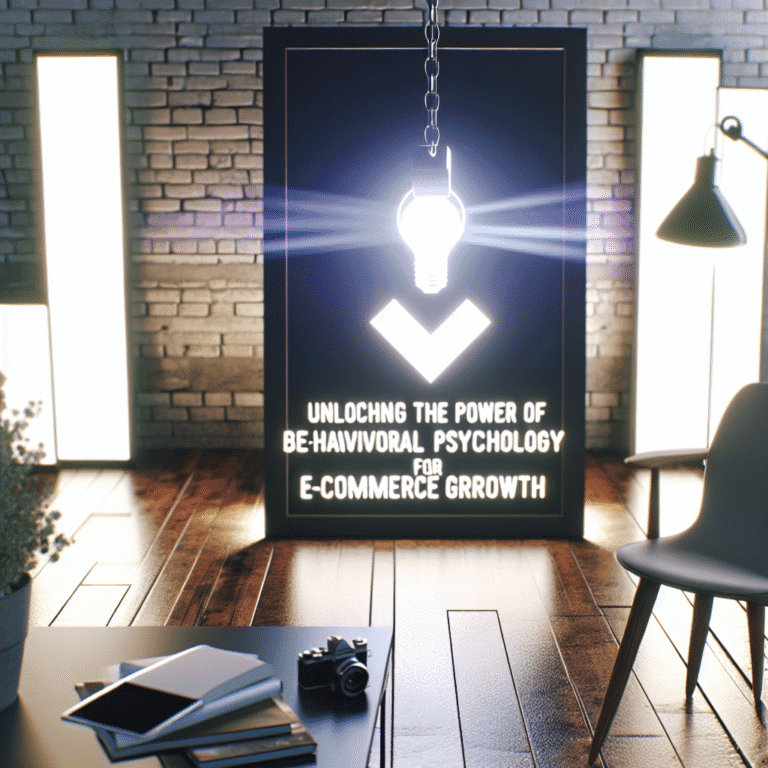Prices That Make Us Tick
Here's a nugget to chew on. Pricing isn’t all about the arithmetic; it’s a bit more like psychology donning some shiny wellies. In the world of ecommerce, pricing strategy isn't simply a game of spreadsheets. Calculate costs, toss in a margin, announce that cheeky 15% off, and watch the tumbleweed roll by if you're just treating products like commodities.
Now let's chat about what really matters. It’s not just about what a price is; it’s about how it feels. Customers often react to prices with their gut and not their spreadsheets. Get this bit right and you can price smart without scraping your margins to the bone.
So, let’s dive into some nifty psychological tactics that can work wonders in boosting those conversions.
Understanding Pricing Psychology
Forget classic pricing theory that says customers are logical creatures; behavioural pricing knows they respond to hints and cues. In the world of online shopping, price stands in for everything—trust, quality, comparison.
- Online shoppers can’t touch or try items, so numbers must do the talking.
- In a sea of open tabs, consumers play constant comparison games.
- Shopping fatigue often leads to quick and emotional decisions.
You know where I’m going with this: "People choose between descriptions of things," as the wise Daniel Kahneman once put it. Your price tag is more than a number; it’s a description with persuasion powers.
Let’s break down some time-tested pricing psychology that brands like Allbirds, Casper, and Glossier have used to spin perception into increased sales.
Charm Pricing Works Wonders
A price tag reading £9.99 vs £10.00? It still works wonders. It’s that left-digit bias, making the whole affair feel like “nine-something” instead of “ten.” This little hiccup in our brains often spikes conversions, and it's not because we’re daft; it’s because we’re speedy.
In a little experiment with a lifestyle brand, swapping a £20 beanie to a £19.95 one increased conversions by a neat 17%. Folks were quick on the uptake, not slow on the awareness.
- Best for impulse buys and low-friction add-ons
- Steer clear for luxury items where you want them to feel prestige, not pound shop
Anchoring Makes Your Price Look a Bargain
Picture this: you showcase a £150 face cream before your £90 option. That £90 cream suddenly seems like the sensible choice. That's price anchoring slowing things down for you nicely. People compare prices and your job is to make the real price shine with savvy dashes of contrast.
Try these:
- Display original price next to sale price
- Use tiered options with a premium decoy
- Make sure visual hierarchy puts the high anchor on top
An apparel brand worked this magic by placing a fancy £320 jacket first on the list. It barely sold, but it made every £150 jacket beneath it much more tempting.
Bundling Boosts Perceived Value
Grouping products together at a reduced price? That’s bundling, folks, your new best friend. Imagine selling a £20 cleanser, a £35 oil, and a £25 serum. Individually: £80. But bundled at £49? Call it a glow kit, and watch it fly off the virtual shelf.
Bundling:
- Cuts down decision fatigue
- Encourages bigger spend over "savings"
- Moves less popular items alongside the stars
Top strategies include pure bundles, flexible bundles, and showcasing impressive “£80 value for £49” deals.
Have a Decoy Price
Place a big £299 plan right next to a £49 one. No one's buying the expensive tier, but it makes that £49 offer look like a catch. This trick is asymmetric dominance. Plop a premium decoy beside the real offer and it’ll somehow look reasonable and safe.
The knack:
- Set the gap wide to make buyers think twice, not run away
- Label the mid-tier option as "Best Value"
- Make the decoy clearly too basic or over the top
Coffee shops and software companies have cracked this code; it’s all about choosing by contrast.
Minding How Prices Look
The look of a number matters. Display influences perception.
- Commas like £1,299 seem hefty, while £1299 feels snappier
- Decimals hint at needless precision
- “From £29/month” feels lighter than “£348/year”
Pro tips feature removing decimals unless you really need them, trying a slightly smaller font for pricing, and checking the whitespace around prices for impact.
Using “From” Wisely
Small wording changes can turn scepticism into interest. “Up to 30% off” might sound fishy, but phrases like:
- "Starting from £39"
- "Best value from £65"
- "Now only £22"
set expectation levels rather nicely.
Try testing out alternatives like “From just” or “Today only” to avoid ambiguity and deliver on promises instead.
Telling a Story Justifies Prices
If you’re selling a £58 balm, don’t let the customer stumble over the price. Behavioural psychology shows that when value is clear and visible, price reluctance tends to melt away.
Examples include:
- “Used in NHS-backed clinical trials”
- “Crafted in Sheffield from rare high-carbon steel”
- “Backed by 9,000+ physiotherapists worldwide”
These value justifications give buyers a better story than just the numbers to focus on.
Per Day Costs Ease Sticker Shock
Break down bigger numbers into daily bite-size portions. Instead of presenting £299/year, say something like:
- "Just 82p a day for super nutrition"
- "Less than your Spotify subscription"
- "Peace of mind for 33p per session"
It reframes costs into digestible logic. Brands like BMW and Huel know this theatre trick well.
Compare anchors like coffee's “less than your morning flat white” or transport costs to soften the blow.
Proper Use of “Free”
The word "free" can be magical, but wield it wisely. Free shipping, samples, or returns can tip the scales, but overuse might cheapen the brand.
Ways to play this right:
- "Free delivery on orders over £50” motivates spending
- "Free tote when you subscribe” adds perceived luxury
- "30-day free trial” reduces risk for high-trust purchases
Think about what feels big to buyers but little to offer from your end.
Timing Is Everything
Human behaviour is not static, nor is when you present prices. Research shows:
- Thursdays are for optimism, great for premium intros
- Sundays are low-energy, perfect for bundles and comfort buys
Try timing pricing offers according to payday weeks, weather changes, or recent news to better connect emotionally with your audience.
Wrapping Up
Before you’re tempted to quit on a struggling price, remember it's not always the price itself that might be off. By reframing, presenting with flair, or cleverly positioning it, you can increase conversions without knocking out the perceived value.
Explore these psychological cues and tactics to make pricing not only practical but persuasive.





